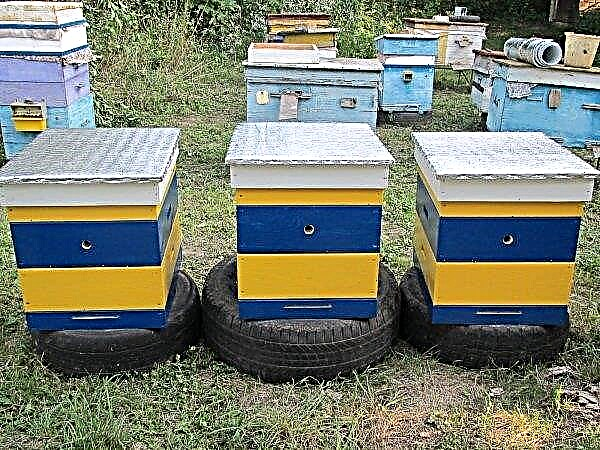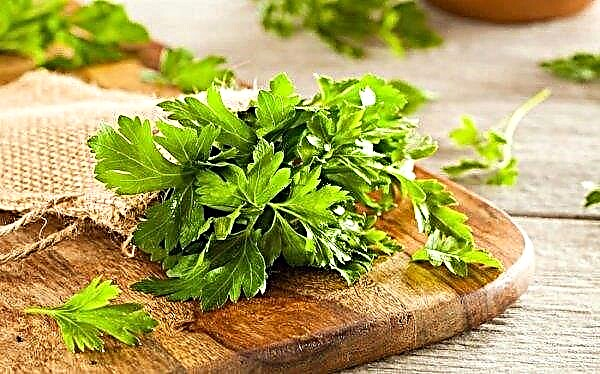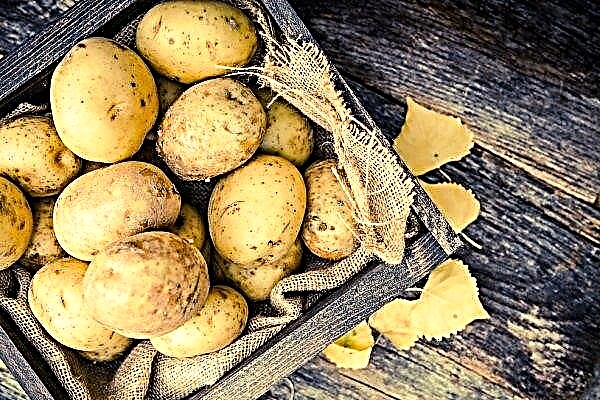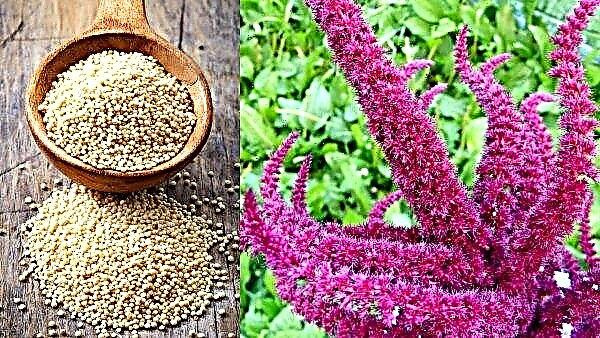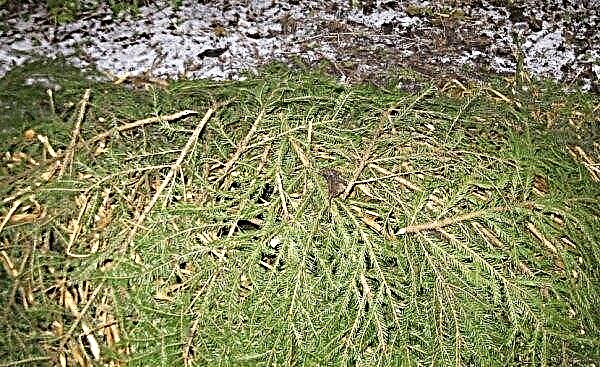Camellia Japanese Indoor - an incredibly beautiful plant that will decorate any room. However, the flower is not common in indoor floriculture, as it is considered difficult to care for. To simplify this process, familiarize yourself with the intricacies of leaving and creating a microclimate for camellia indoors.
Botanical description of the plant
It belongs to the evergreens of the Tea family, which are widespread in Japan and China, where they are planted as ornamental shrubs.
More than 2 thousand varieties and hybrids of Japanese camellia were bred, which differ in height - from 50 cm to 2 meters (shrubs), higher specimens grow in the form of trees with a thick single trunk, reaching 11 m in height. In indoor conditions, the height of the bush does not exceed 1 m.
The leaves are oval, leathery texture and glossy gloss on the surface.
The flowers are smooth, double or semi-double, without a pronounced smell, pink or pion-shaped with many petals. Usually represented by white, pink, red or its shades, can be two-tone. Bloom in winter when the air temperature drops to + 10 ° C. Flowering lasts 1-3 months. The fruit of Japanese camellia is an oval or round dry box with five compartments, in which 8 seeds are placed.
The fruit of Japanese camellia is an oval or round dry box with five compartments, in which 8 seeds are placed.
| Root system | Well developed, powerful |
| Stem | Long, thick, with many shoots |
| Leaf shape | Elliptical or ovoid |
| Leaf color | Dark green with a glossy sheen. |
| Flower shape | Pink and peony |
| Flower color | White, pink, red |
| Fruit shape | Five-compartment oval capsule that looks like a nut |
| Fruit color | Green, seeds are large, dark brown |
| The taste of the fruit | Not eatable |
Varieties
There are many varieties of Japanese camellia, but the most popular are:
- Vittorio Emanuele II - a variety with semi-double buds, which consist of slightly convex and bent to the opposite side of the petals. The color of the buds is white and pink with saturated longitudinal stripes of raspberry or pink on each petal.
- Guilio nuccio - it is characterized by raspberry buds on which 2 types of petals are located - large, rounded petals are attached in 2-3 rows, and in the center of the bud is a small magnificent “cap” of small oblong petals.
- Double white - has terry flowers of a snow-white color, with spherical petals, which are attached to the base in compliance with a clear geometry in a checkerboard pattern, which is clearly visible when the bud is completely dissolved.
- Desire - a variety with semi-double buds, has a two-tone color: white - inside, pink - outside, with a smooth transition of color.
- Margaret Davis - characterized by the presence of two-color semi-double buds. The petals located on the outside of the flower have a rounded shape, large size and white color, which at the edges passes into a bright raspberry ragged border. The inner petals are small, often closed, close the center of the bud, they also have a raspberry border, but not so bright.
- Lady vansittart pink - A variety with smooth flowers, characterized by an elegant form of buds. In the arrangement of the petals, a clear geometry can be traced, in the center of the bud there are long yellow stamens surrounded by 3 petals, below them in a checkerboard pattern are the remaining rows of petals, which form a medium-splendor flower. Petals of white-pink color with darker veins, some petals have bright raspberry blotches.
- Chandlers red - a variety with bright red buds having heart-shaped petals. The lower 2 rows of petals are large, slightly bent outward. In the center are small oval petals, creating a magnificent "hat". Externally, the flower resembles peonies.
- Asahi-no-mai - a variety with smooth flowers, having bright red wide petals located in 1–2 rows and a large thick core with bright yellow stamens.
- Tricolor - characterized by semi-double flowers, the petals have a white-pink color, with a small amount of red blotches and torn thick strips of scarlet color. In the center of the flower are rare long yellow stamens.
- Pink perfection - It is considered one of the most beautiful varieties. Has terry buds of soft or bright pink color, which consist of slightly bent in the opposite direction of the petals. The bud reveals a clear geometry of the arrangement of the petals, in the center of the bud the petals are closed and resemble an unopened bud of a peony.
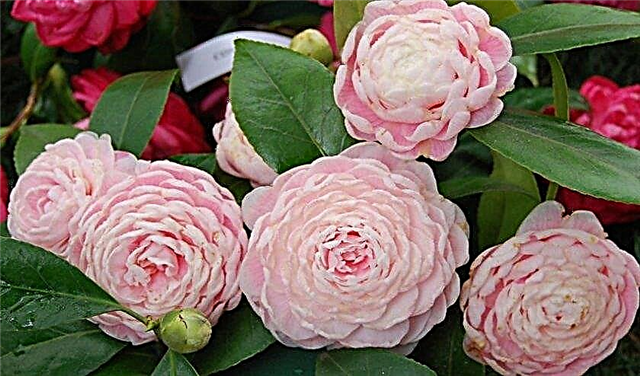









Conditions for successful growing at home
Ignorance of the basic nuances of growing Japanese camellia often causes the death of a flower. We list the optimal indoor climate and the rules for choosing a suitable place to place the pot.
Lighting
The place for installing the pot with a flower is chosen well-lit, but protected from direct sunlight. To place a flower, windows facing west or east are suitable. If you plan to place the plant on the south window, it must be shaded.
Important! On the northern windows, the plant cannot exist normally. If it grows, then flowering will not occur.
The leaves can grow unevenly, and the shoots bend towards brighter lighting, therefore, it is recommended that the pot is periodically turned in different directions. When buds form on the plant, you cannot turn the pot - any changes in lighting can lead to bud dropping.
Ventilation
Regular ventilation of the room is the key to plant health, since pathogenic microorganisms accumulate in stagnant air, and the risk of flower diseases or damage to its parts by pests increases. To minimize risks, the room is ventilated daily for 1-2 hours.
In summer, it is better to take camellia to the street or an open balcony, protecting it from drafts or strong winds.
Temperature
For flower development in the summer season, the indoor air temperature must be maintained at + 20 ... + 25 ° С, in winter it is important to maintain + 10 ... + 15 ° С to enable camellias to form buds.
Important! If in winter the air temperature exceeds the indicated values, the buds may crumble even before they begin to bloom.
Air humidity
Japanese camellia suffers from dry air. The problem manifests itself in winter, in the heated period, when artificial heat sources dry the air. The optimum humidity for camellia is 60–75%.
To increase the humidity in the room, use containers with wet expanded clay or lay moss-sphagnum near the trunk of the plant and spray it regularly. Fumes from expanded clay or moss can provide the desired level of moisture and keep the flower healthy.
Home Care
In order for the camellia to grow and bloom, it is provided with care, consisting of regular watering, feeding, mechanical processing of the leaf part and transplantation.
Watering
It is necessary to water camellia regularly and make sure that the earth does not dry out. Waterlogging of the soil, stagnation of water in the tank should not be allowed. Failure to comply with the watering schedule often leads to falling leaves, buds and the development of diseases.
For irrigation use soft, standing water at room temperature. Pour camellia under the root and drain the excess water from the pan, which accumulates during heavy watering. In summer, the plant is watered 2-3 times a week, in winter - 1-2 times.
Top dressing
After the camellia has faded, and young shoots appear, the flower should be fertilized with complex dressing for indoor decorative-flowering plants, according to the instructions. Further, the plant should be fertilized every 3 weeks until the moment when new buds begin to appear in the next season. For the flowering period, fertilizer is suspended.
Pruning
To make the plant thick and lush, it is recommended to trim it. However, often this procedure is not carried out, since camellia painfully tolerates such an intervention. During this period, you should pay attention to the buds - weak and sick to remove with sharp scissors, so that the rest of the flowers grow better, and the plant has enough nutrients to develop shoots.
2-3 buds should be left on one shoot, choosing large and strong, the rest should be removed.
In late October - early November, it is recommended to trim the shoots to stimulate the growth of axillary buds. Each shoot is cut by 5-10 cm, based on the size of the plant.
Transfer
Camellia grows fast, so it needs an annual transplant. When the flower is 5 years old, transplantation is not required so often - once every 3 years. A suitable time for transplantation is considered to be mid-summer, when the active growth of the plant stops.
The flower grows well on acidic soils, so the appropriate composition for transplantation is selected. Young plants are prepared with a mixture containing leaf (1 part), coniferous (2 parts), peat soil (1 part) and river sand (0.5 part). For adults, plants (5 years and older) prepare the same substrate composition, but adding 1 part of coniferous land. In order not to cook the earthen mixture yourself, you can purchase ready-made soil for rhododendrons, which is also suitable for camellias.
In order not to cook the earthen mixture yourself, you can purchase ready-made soil for rhododendrons, which is also suitable for camellias.
Each flower transplant should be carried out in a larger pot than the previous one, 2-3 cm in diameter. It is better if the pot is wide and medium height. The material of the pot is chosen in accordance with financial capabilities and personal preferences.
Transplant Process:
- ¼ volume of expanded clay is poured at the bottom of a new pot.
- On top of expanded clay lay 3 cm of earthen mixture.
- A plant with an earthen lump is carefully removed from the old pot.
- Having slightly destroyed the earthen lump and reached the bulk of the roots, they are examined for diseases, injuries, rot.
- Dead and affected parts of the root system are removed with a sharp knife or scissors, and the sections are sprinkled with crushed activated carbon.
- The prepared plant is installed in a new pot and the earth is poured so that all the voids are filled. For the procedure to take place quickly and efficiently, you must periodically shake the container.
- When the plant is well fixed, the soil around the trunk should be tamped a little and pour with warm water.
Breeding
Japanese camellia can be propagated in three ways. Let's consider each in more detail.
Cuttings
A popular way at home. The best period for grafting is August.
Consider the process in stages:
- Young cuttings that have not yet had time to lumber are selected.
- The selected cuttings are cut at an angle with a sharp knife, maintaining a length of 8 cm.
- On a cut stalk, all leaves are removed, except for the top two.
- To cut the root better, the slice is dipped in “Kornevin” and planted in a pot 5 cm in diameter, to grow the roots.
- Planting depth - 3 cm. A peat-sand mixture (1: 1) is used as a substrate.
- After planting the cuttings, the soil is watered, and the container is covered with a transparent plastic bag, put on a bright window and maintain the air temperature at + 20 ... + 25 ° С.
- Regularly remove the package (1 time per day for 1 hour) to ventilate the plant.
- When the roots grow (after 2 months), you will notice an active growth of the stem, during this period you can remove the bag and transplant the stem into an acidic substrate with a composition for transplanting young plants.
- For transplantation choose pots 7 cm in diameter.
- Care for rooted cuttings is necessary in the same way as for an adult plant.
Seeds
Usually this method is not practiced, since the collected seeds quickly lose their germination, and often the resulting plant is poorly developed.
Did you know? Camellia seeds contain valuable oil, which is widely used in Japan and China in the cosmetic industry (most often in the production of lipstick).
If you decide to propagate camellia seeds, you must consider the following tips:
- Sowing is carried out in small containers (solid wooden crates) with a peat-sand mixture (1: 1).
- It is necessary to sow according to the scheme: 3 cm in depth, 6 cm between seeds, 5 cm between rows.
- After sowing, the soil is watered, and the container is covered with glass.
- Periodically, the glass is removed for ventilation (once a day for 1 hour).
- Germination of seeds should occur at a temperature of + 20 ... + 25 ° C.
- The soil is sprayed daily with a spray.
- When the first shoots appear, the glass is removed.
- When 3 leaves appear on the plant, camellias dive into separate containers with acidic soil (as with cuttings). The pot should be 6–7 cm in diameter.
- Care continues as an adult plant.

Layering
Camellia can be propagated by air layering.
Consider how to do it right:
- On the plant, choose a central or lateral young shoot, at the beginning of the active growth of the flower. The stem of the selected lay must have a saturated green, not dark color, its thickness is 4-6 mm.
- The shoot is trimmed with a sharp knife so as not to separate from the mother plant, but at the same time there was 2-3 mm of living tissue for root formation.
- All leaves are removed from the shoot, leaving only 1 leaf - the first from the growth bud.
- In the place of the cut, the lay should be cut into the shoot to a depth of 1 cm.
- The slice is treated with “Kornevin”, wrapped with wet sphagnum moss and a plastic film and fixed with wire.
- The temperature in the room for the normal formation of roots should be + 20 ... + 25 ° С.
- When roots 1-2 cm long appear on the layer, it is carefully separated from the mother plant and planted in acidic soil.
Did you know? Camellia appeared in Europe in 1738, brought from the Philippine Islands by Jesuit monk Joseph Kamel. In his honor, and called the plant.
Possible growing difficulties
In the process of indoor cultivation of Japanese camellia, some difficulties may arise associated with:
- rotting of plant roots under the influence of black mold or root rot. Common signs of illness are: wilting buds and leaves, an unpleasant smell from the pot. The problem can be solved by timely plant transplantation with the removal of all diseased roots and a complete change of soil and pot;
- the appearance of a scab on the leaves of the flower, the signs of which are dark tubercles on the back of the leaves. You can overcome the scale shield by treating the plant with Fitoverm, according to the instructions;
- the appearance of a mealybug, which manifests itself in the form of a white coating on the leaves. It is necessary to treat the flower by processing “Karbofos”, according to the instructions.
 It is not easy to grow Japanese camellia in indoor conditions, but following the recommendations for caring for a flower, you can get a healthy and beautifully flowering plant, which will certainly become the center of attention.
It is not easy to grow Japanese camellia in indoor conditions, but following the recommendations for caring for a flower, you can get a healthy and beautifully flowering plant, which will certainly become the center of attention.


